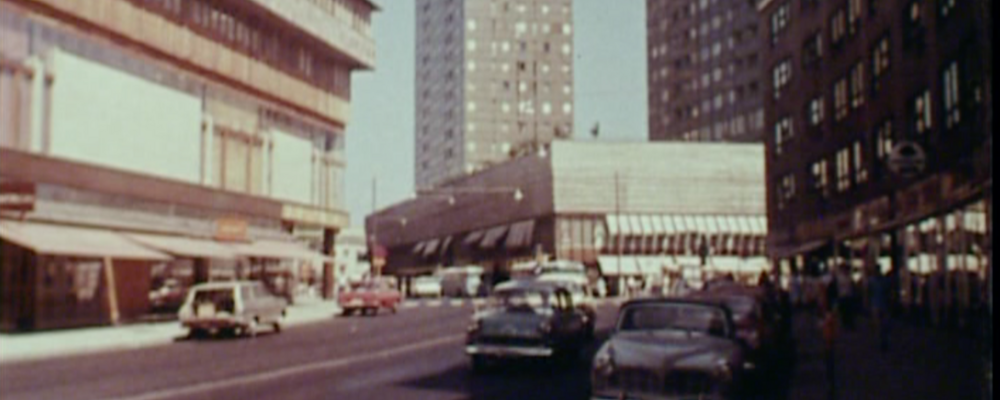The optimism of the era was expressed in the films commissioned to market new housing estates and to celebrate the ability of historical cities to adapt to the demands and ideals of contemporary living. Although these films embraced development, there were also examples of a more circumspect tone. These addressed the risk that important values were being lost in the modern and increasingly bureaucratic spirit of the time. Among the acclaimed and award-winning commercial films of the 1960s in this genre were Göteborg – Hjärtpunkt i Norden (Gothenburg: Heart of the Nordic Region, 1964), Som ringar på vattnet (Like Rings on Water, 1965) and A Place to Live (1967). The first was directed by Håkan Bergström, the latter two by Karsten Wedel. In a way that is typical for the genre, these films glorify the Swedish welfare state and its urban planning for local as well as national and international audiences.
Although the optimistic vision of the future dominated, an increasing number of sceptical voices could also be heard, and one of the early films that took on the record-breaking wave of new construction with a critical view was Myglaren (The Grifter, 1966). The film was a collaboration between screenplay writer Jan Myrdal, photographer and filmmaker Rune Hassner, and photographer Christer Strömholm, who played the lead role in the film despite having no prior experience. The Grifter is about a representative of the emerging class of welfare-state bureaucrats who benefit from the prevailing social system and the era’s strong focus on well-being. In terms of its form, the film challenged the conventions of the documentary genre and was the first feature film produced for Swedish Television. The Grifter attracted a great deal of attention when it aired on television, and it also sparked a toxic debate on the criteria for the funding of quality film in the country. To be considered for funding, in addition to being of a certain length in meters, a film had to have a première at a cinema. What makes The Grifter so interesting, apart from the subject matter and the issues of film industry politics, is that it exemplifies how key figures in photography and some areas of literature can come together to break new ground in terms of both the genres and distribution forms of lens-based media.
Programme
Film screening: Bio Valand
10:00–11:30 AM Myglaren (The Grifter, 1966).
11:45 AM–12:45 PM Göteborg – Hjärtpunkt i Norden (Gothenburg: Heart of the Nordic Region, 1964), Som ringar på vattnet (Like Rings on Water, 1965) and A Place to Live (1967).
Exhibition, lectures and conversations: FG2
1:45 –2:00 PM Niclas Östlind: “Moment: An Introduction”.
2:00–2:30 PM Erik Florin Persson: “Urban Planning and the Welfare State: Swedish Commercial Film About 1965”.
2:30–3:15 PM Anders Dahlgren: “Urban Planning in the Record Years: Future Optimism and Planned Development”.
3.15–3.45 PM Intermission and Archival Interlude 1, Andreas Hagström: “The Truly Physical Meeting With an Archive on the Way Being Burnt – Or How I Saved Rune Hassner’s Clip Archive.”
3:45–4:30 PM Per Vesterlund: “The Case of Myglaren: At the Intersection of Film, Television and Politics in 1966”.
4:30–5:15 PM Annika Olsson: “The Role of Documentary Film in the People’s Home Era: Jan Myrdal and Gun Kessle’s report books”.
5:15–6.00 PM Andreas Gedin: “Christer Strömholm and Nazism”.
6.00–6.30 PM Intermission and Archival Interlude 2, Karl-Magnus Johansson: “Clip Archives as Systems of Knowledge during the Post War Era.”
6:30–7:15 PM Conversation with the Speakers. Moderator: Mats Jönsson
